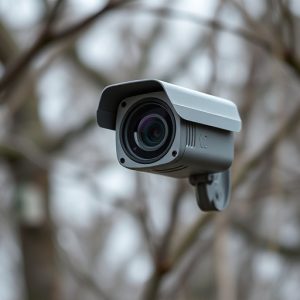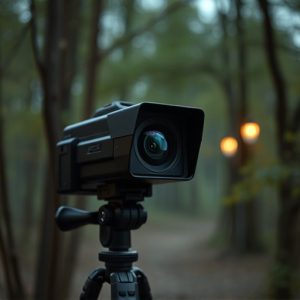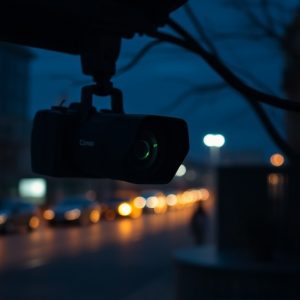Optical Sensor Tech: Safeguarding Kids with Battery-Operated Hidden Cameras
Battery-operated hidden childcare cameras offer real-time security but raise significant privacy and…….
Battery-operated hidden childcare cameras offer real-time security but raise significant privacy and ethical concerns. These devices, though innovative for 24/7 monitoring, can disrupt caregiver-child relationships if used without regulation. Parents must understand their capabilities and limitations to ensure legal and ethical compliance, maintaining a transparent childcare environment. Proper placement, maintenance, and adherence to regulations are crucial for effective yet respectful use in educational and care settings.
Uncovering hidden threats in childcare settings has never been more critical. This article explores the intricate world of Battery Operated Hidden Childcare Cameras and the vital role they play in parental surveillance. We delve into the advanced optical sensor detection technologies used to identify these cameras, offering a comprehensive guide for parents. From understanding their capabilities to navigating legal boundaries, this resource equips you with knowledge to ensure your child’s safety while respecting privacy. Discover professional methods for strategic camera placement and maintenance, ensuring optimal security without compromising ethical standards.
- Understanding Battery-Operated Hidden Cameras: A Parent's Perspective
- The Role of Optical Sensor Detection in Childcare Surveillance
- Professional Methods for Effective Camera Placement and Maintenance
- Legal and Ethical Considerations for Implementing Hidden Cameras in Childcare Settings
Understanding Battery-Operated Hidden Cameras: A Parent's Perspective
Hidden cameras, particularly those operated by batteries, have become a concern for parents in the digital age. These tiny, often unnoticeable devices can be easily concealed and used to monitor childcare settings, raising both eyes and eyebrows. From a parent’s perspective, understanding the capabilities and limitations of battery-operated hidden childcare cameras is paramount for making informed decisions about their use.
While these cameras offer a sense of security by providing real-time footage and recorded videos, they also bring up ethical questions regarding privacy and trust. Parents need to be aware that such devices can cause distress if not used responsibly, as the presence of surveillance might alter the natural dynamics between caregivers and children. Additionally, ensuring the legal and ethical compliance of using hidden cameras in childcare environments is crucial for maintaining a healthy relationship based on transparency and respect.
The Role of Optical Sensor Detection in Childcare Surveillance
Optical sensor detection plays a pivotal role in enhancing childcare surveillance, particularly with the use of battery-operated hidden childcare cameras. These advanced devices employ optical sensors to capture and transmit real-time video footage discreetly, ensuring round-the-clock monitoring without disrupting the environment or routine of children. The sensitive sensors detect even slight movements, allowing caregivers to respond promptly to any potential issues.
By integrating optical sensor detection into childcare settings, professionals can maintain a safer and more nurturing atmosphere. Battery-operated hidden cameras equipped with these sensors provide continuous observation, enabling quick decision-making in emergency situations. This technology supports the overall well-being of children by offering remote monitoring capabilities while preserving their privacy and comfort.
Professional Methods for Effective Camera Placement and Maintenance
Professional methods for effective camera placement and maintenance are essential for achieving optimal results with battery-operated hidden childcare cameras. The first step involves strategic positioning, ensuring these devices capture clear, detailed footage without being readily visible. This often means discreetly integrating them into existing decor or fixtures, like wall outlets or light switches. It’s crucial to consider factors such as lighting conditions and angles to maximize visual clarity. Regular maintenance is equally vital. This includes testing battery life, ensuring seamless operation, and regularly cleaning lenses for optimal picture quality.
Professional technicians also advocate for routine software updates, which not only enhance camera performance but also improve security features, making it harder for unauthorized access. Additionally, proper storage and handling of these cameras are key to longevity. Protecting them from extreme temperatures, physical damage, and moisture can significantly extend their operational lifespan, ensuring consistent, high-quality monitoring in childcare settings.
Legal and Ethical Considerations for Implementing Hidden Cameras in Childcare Settings
The implementation of hidden cameras in childcare settings, often powered by battery-operated hidden childcare cameras, raises significant legal and ethical concerns. While these devices can serve as valuable tools for monitoring and ensuring child safety, their use must adhere to strict guidelines to protect privacy and individual rights. Many countries have laws in place regulating surveillance, especially in sensitive environments like schools and childcare centers, to prevent abuse of power and safeguard personal information.
Ethically, the presence of hidden cameras must be transparent to all parties involved—parents, caregivers, and children. Informed consent is crucial; parents should be made aware of camera locations and given the option to opt out. Moreover, the data collected from these devices must be securely stored and accessed only by authorized personnel for legitimate purposes, ensuring that privacy is maintained at all times.
Battery-operated hidden childcare cameras have transformed parental surveillance, offering a professional and discreet method to ensure child safety. Understanding these devices, their detection, and ethical implications is crucial for parents aiming to make informed decisions. By employing optical sensor detection and implementing effective camera placement strategies, along with adhering to legal guidelines, parents can leverage technology to create safer environments for their children without infringing on privacy rights. These professional methods empower parents to navigate the digital landscape of childcare surveillance effectively and responsibly.


